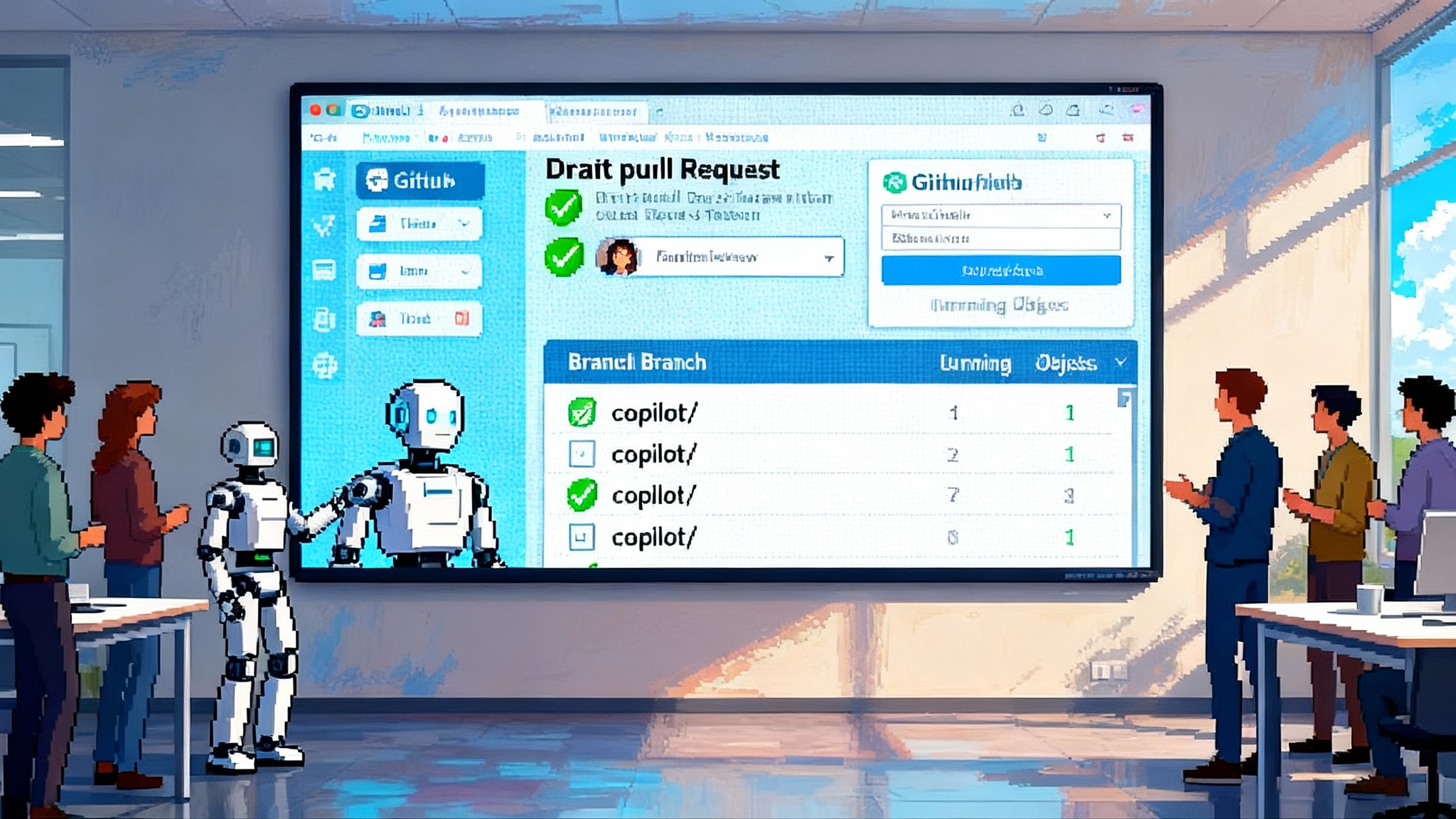Twilio ConversationRelay makes phone lines an agent platform
Twilio’s ConversationRelay turns a phone number into a production voice agent with interruption handling, real time analytics, and secure handoff to humans. This guide shows how to launch a safe, latency tuned agent in 90 days.

The phone line just became an agent platform
Twilio has turned the oldest digital channel into a live software surface. With ConversationRelay, part of Twilio’s 2025 lineup and now in market, a plain phone number can host a production voice agent that listens, speaks, interrupts gracefully, hands off to a human when needed, and measures everything. The product pairs Twilio telephony with orchestration for speech to text, text to speech, and the large language model of your choice. It also ships with native observability. The result feels less like an IVR tree and more like a cooperative coworker living on the Public Switched Telephone Network.
If you want the one line summary, it is this: Twilio made phone calls programmable at the dialog level. That is a big shift from earlier generations that stopped at streaming audio and left you to glue the rest. Twilio’s own recap places ConversationRelay alongside Conversational Intelligence and highlights interruption handling, deep integrations with providers such as ElevenLabs and Deepgram, and bring your own large language model. You can scan those claims in Twilio’s 2025 product announcements. The showcase frames this launch as a turnkey path to human like agents on real numbers, not demos on a laptop.
What ConversationRelay actually does
Under the hood, ConversationRelay coordinates three time sensitive loops. It listens using automatic speech recognition, it reasons using a model you choose, and it speaks back using high quality text to speech. The key is orchestration. Your application connects over a WebSocket, streams tokens both ways, and lets Twilio handle timing details that are painful to build, such as barge in detection, partial hypotheses, buffering, and audio focus.
In practical terms, that means you can write an agent that cuts in with an answer the moment the caller has said enough words, then yields the instant the caller resumes. The dialog is full duplex, so both sides can talk, but it is governed by rules that keep it polite. The target experience is a natural back and forth with minimal dead air.
Two production elements matter. First, ConversationRelay integrates with Twilio’s Conversational Intelligence so that every call is not only handled, it is analyzed. That gives you sentiment, intents, and outcomes. Second, ConversationRelay plays well with existing contact center flows. When an issue needs a human, the agent can hand off to a live representative in Twilio Flex with the transcript and context intact, so the caller does not repeat themselves.
Why this is different from streaming audio
Developers who stitched their own stacks in 2024 learned that streaming audio was only half the job. The hard parts were timing and turn taking. ConversationRelay elevates the unit of work from raw PCM to dialog turns. It coordinates when to speak, when to wait, and how to recover from interruptions. That is the difference between a demo and a durable system.
Interruption aware dialogs in practice
Humans do not wait for turns. We interrupt to correct addresses, spell last names, and accept a suggestion. Voice agents that ignore these social cues frustrate callers and burn the first minute with awkward pauses. ConversationRelay treats interruptions as a first class signal.
Here is a simple mental model. Imagine the conversation as a single microphone that slides back and forth on a rail between caller and agent. When the caller starts to speak, the mic glides their way, shaving the agent’s volume to zero. When the agent is ready to answer, the mic glides back. The orchestration code moves this mic in response to real time features such as voice activity detection and partial transcripts. Because the text arrives token by token, your logic can trigger on phrases like “Yes, that is correct” or “Actually, my new zip code is” without waiting for a period.
For builders, the design tip is to write prompts and tools that assume overlap. Keep answers short, front load the most useful sentence, and hold follow ups until you get a confirming syllable. Think of it as drafting on a busy highway, not meandering on a quiet back road.
Real time analytics, from tape recorder to control tower
Traditional call centers often captured recordings as artifacts. Weeks later, analysts sampled a few to find patterns. ConversationRelay, paired with Conversational Intelligence, moves that telemetry to the foreground.
Here are metrics that teams ship on day one, and why they matter:
- Containment rate: percent of calls resolved without a human handoff. This is the first indicator of cost savings and experience improvement.
- Time to first helpful word: milliseconds from caller pause to the agent’s first content word. This measures perceived snappiness better than average response time.
- Task success rate: the share of calls that completed a specific workflow, such as billing lookup or appointment scheduling. Tie this to revenue or cost per task.
- Interruption recovery: how often the agent resumes correctly after a caller barges in. This is your proxy for dialog robustness.
- Sentiment delta: change in sentiment from the first 30 seconds to the last 30 seconds. It provides a simple quality score that correlates with loyalty.
Because the analytics are native, you can alert on anomalies during the day. If a health system’s refill workflow starts failing at 11 a.m., the on call engineer can inspect transcripts and discover that a downstream API changed a field name. With a traditional stack, that would be a week later discovery.
Compliance by default, not by paperwork
Any credible deployment in healthcare or financial services begins with data boundaries. Twilio states that ConversationRelay became eligible for HIPAA coverage in March 2025. That eligibility means Twilio will sign a Business Associate Addendum and offer the controls needed to process protected health information over calls. You can confirm the date and language in ConversationRelay HIPAA eligibility.
Eligibility is not magic compliance. Builders still own the design. The pattern that works is a layered posture:
- Minimize what you collect. Ask only for the identifiers you need. Never echo full Social Security Numbers.
- Segment storage. Keep raw audio in a locked bucket with short retention, store redacted transcripts separately for analytics, and tokenize sensitive fields.
- Encrypt in transit and at rest. Use customer managed keys where supported.
- Log access. Treat transcripts like medical charts. Every read should have a reason.
- Bake consent into the first turn. A concise notice that explains the agent is automated, records are analyzed, and a human is available builds trust and covers policy.
Twilio also emphasizes regionalization and provider choice. For example, you can pick speech providers with data residency that matches your obligations. That is not a checkbox. It is an architectural decision you make early so your routing and logging follow suit.
Why regulated industries may adopt first
Many predict that gaming or consumer social will be the first mainstream home for voice agents. The near term reality is more practical. Healthcare, financial services, insurance, and public services have the strongest motive and least tolerance for chaos. They also already run on phone calls.
- The jobs are structured. Refill a prescription, verify identity, accept a payment, update an address. Well bounded workflows are ideal for today’s models.
- The economics are clear. A large health system may process millions of inbound calls a year. Lifting even 15 percent into self service without degrading satisfaction is a seven figure swing.
- Outcomes are measured. Containment, handle time, abandonment, first call resolution. These are standard metrics with owners and dashboards. Voice agents can be tuned against them.
- Risk posture is buildable. HIPAA eligibility reduces legal friction. Controlled vocabularies and audit trails reduce operational risk. You can drop to a human safely.
It is no surprise that Cedar, a patient billing platform, is already using ConversationRelay to handle sensitive calls. Billing, scheduling, claims status, and benefit explanation map almost perfectly to an interruption aware, analytics rich agent with human backup.
Where this fits in the agent ecosystem
A wave of products is pushing agents into core business workflows. On this blog we have tracked how hyperscalers and platforms are standardizing patterns for safe, observable agents. If you want to see how security teams are embracing similar ideas, read how the agent era for SecOps is arriving. To understand how app platforms are making agents first class citizens, compare Twilio’s phone first approach with the way Agents a Native Platform is becoming the norm. And for buyers living in cloud ecosystems, the path to agents enterprise native on AWS shows how regionalization and governance align with the controls you already use.
Taken together, these shifts signal a clear pattern. Agents are moving from novelty to infrastructure. ConversationRelay focuses that trend on the one channel every serious business already runs at scale: the phone.
The playbook to ship a revenue bearing agent now
You can go live in weeks. Here is a pragmatic sequence that works inside a large company or a startup with enterprise customers.
- Pick one repeatable, money adjacent workflow
- Healthcare: statement explanation, co pay lookup, refill routing.
- Financial services: card activation after identity verification, balance and transfer status, charge dispute intake.
- Insurance: first notice of loss intake, coverage verification.
- Retail: delivery status and address correction, return eligibility.
Criteria: high volume, clear inputs, clear success definition, easy human escalation.
- Define the scoreboard before a single line of code
- Primary metric: task success rate and conversion to the next step, such as completed payment or scheduled appointment.
- Guardrails: maximum average handle time, error budget for failed tool calls, sentiment floor.
- Safety: no free form disclosure of sensitive data, strict identity checks before account details.
- Design the dialog like a product spec
- Voice: choose one that matches your brand and is easy to understand over speakerphones and in noisy kitchens.
- Prompts: short, directive openings. “I can look up your bill and take a payment. Do you want to start with identity verification or a summary?”
- Barge in plan: responses that end with a clear micro pause so the caller can jump in.
- Confirmation strategy: repeat back critical fields slowly and spell last names.
- Engineer for a latency budget, not a wish
- Target sub 1.5 seconds from caller stop to agent start.
- Budget the path: 300 ms for speech recognition finalization, 200 ms for model planning, 300 ms for first speech token, the rest as slack.
- Stream everything. Use partial hypotheses from speech recognition and partial synthesis from text to speech so you can begin speaking the answer while the model finishes the tail.
- Co locate compute with telephony edges when available and pick providers in the same region.
- Build the tools the model will call
- Identity: one endpoint that handles knowledge based questions or one time password flows.
- Data fetch: a single query endpoint that returns a small, structured summary that is safe to read aloud.
- Actions: take payment, book, escalate. Keep each verb idempotent and time boxed.
- Wire in analytics before traffic
- Emit a structured event for each step: recognized intent, tool called, tool success, interruption, handoff, outcome.
- Store a redacted transcript pointer so analysts can jump from a metric to the exact turn.
- Set alerts on failure spikes or rising time to first helpful word.
- Prove safety in the open
- Shadow mode: for one week, let the agent listen and propose answers while a human handles the call. Compare outcomes.
- Canary: route 5 percent of calls to the agent within a narrow time window such as 10 a.m. to noon when your best engineers are online.
- Red team: script callers with accents, noisy environments, and curveball phrases. Expand until the system is boring.
- Plan the human handoff as a first class feature
- Trigger on words like “agent” or on frustration signals such as repeated corrections.
- Send the transcript, fields collected, and next best action to the live agent desktop.
- Keep the caller on the same number and music while the handoff happens. No second queue.
- Govern the data with written rules
- Retention: delete raw audio quickly unless policy demands longer storage.
- Access: only the team on rotation can open transcripts. Log reasons automatically.
- Training: prefer synthetic data and opt in corpora for improving prompts.
- Roll out with clear messaging
- Tell callers at the start that they are speaking with an automated assistant that can transfer to a person at any time.
- Tell agents that the system should make their day better, not threaten their jobs. Show them the handoff view.
A 30 60 90 day plan
Day 0 to 30
- Choose the workflow and measure the baseline with humans only.
- Stand up ConversationRelay with your speech and voice providers, connect your chosen model, and implement identity and data tools.
- Build the analytics pipeline and dashboards. Ship shadow mode for internal testers.
Day 31 to 60
- Run the canary at 5 percent in working hours. Collect transcripts, fix prompts, and tighten latency.
- Train agents on the handoff flow and improve the live agent desktop.
- Add compliance automation such as redaction of numbers and names in analytics views.
Day 61 to 90
-
Raise traffic to 25 percent for the target workflow. Start a second workflow in shadow mode.
-
Launch after call reviews that sample both successful and unsuccessful calls and produce weekly changes.
-
Present a business review with savings and satisfaction impacts, then expand.
What could go wrong, and how to correct it fast
- Over talk: If the agent and caller talk at the same time, shorten answers and teach the agent to yield immediately at the first sign of speech energy from the caller.
- Hallucinated facts: Never let the model invent account details. Route each claim about balances, coverage, and identities through tools. If a tool fails, be transparent and escalate.
- Lost context: If the model forgets what was said two turns ago, carry a compact, structured state object and include it in every prompt. Do not rely on a raw transcript alone.
- Slow starts: If the first answer feels late, precompute the top three likely replies based on the intent in the first five words. Pick one when the user stops.
- Accent trouble: Benchmark multiple speech engines against your caller mix and switch per call based on detected language or accent confidence.
- Compliance drift: Treat prompts as code. Review diffs with legal and security when they touch sensitive language. Rotate keys and credentials as part of the weekly release.
Build or buy, and why Twilio is pragmatic
Yes, you can stitch your own stack from a telephony provider, an audio streaming service, an automatic speech recognizer, a model host, and a voice synthesizer. Many teams tried in 2024. They ran into three walls: latency, interruption handling, and the lack of native analytics. ConversationRelay leans on Twilio’s global phone network, wraps the real time bits with orchestration, and exposes analytics next to the call. Bring your own large language model keeps you from locking into a single vendor. The value is not that Twilio replaced everyone. It is that Twilio curated the short list and did the plumbing.
On the hyperscaler front, you can assemble similar parts, and for some companies that is the right move. The advantage Twilio brings is phone first pragmatism. Numbers, regulations, contact center workflows, and the messy truth of call queues are the home turf. If your business runs on calls, you want your agent living where the calls live.
The moment
The story is not that voice agents are coming. They are here, they are on real phone numbers, and they have a playbook. Twilio’s ConversationRelay crystallizes a year of experimentation into a product that a chief operating officer, a chief information security officer, and a developer can all say yes to. Interruption aware dialogs make the experience feel human. Real time analytics make it tunable. HIPAA eligibility and provider choice make it deployable in the places that matter most. The next step is yours. Pick one workflow, set a latency budget, wire in the handoff, and ship. When the first caller pays a bill or books an appointment through a conversation that feels natural, you will know you have turned a phone line into software that prints value.





